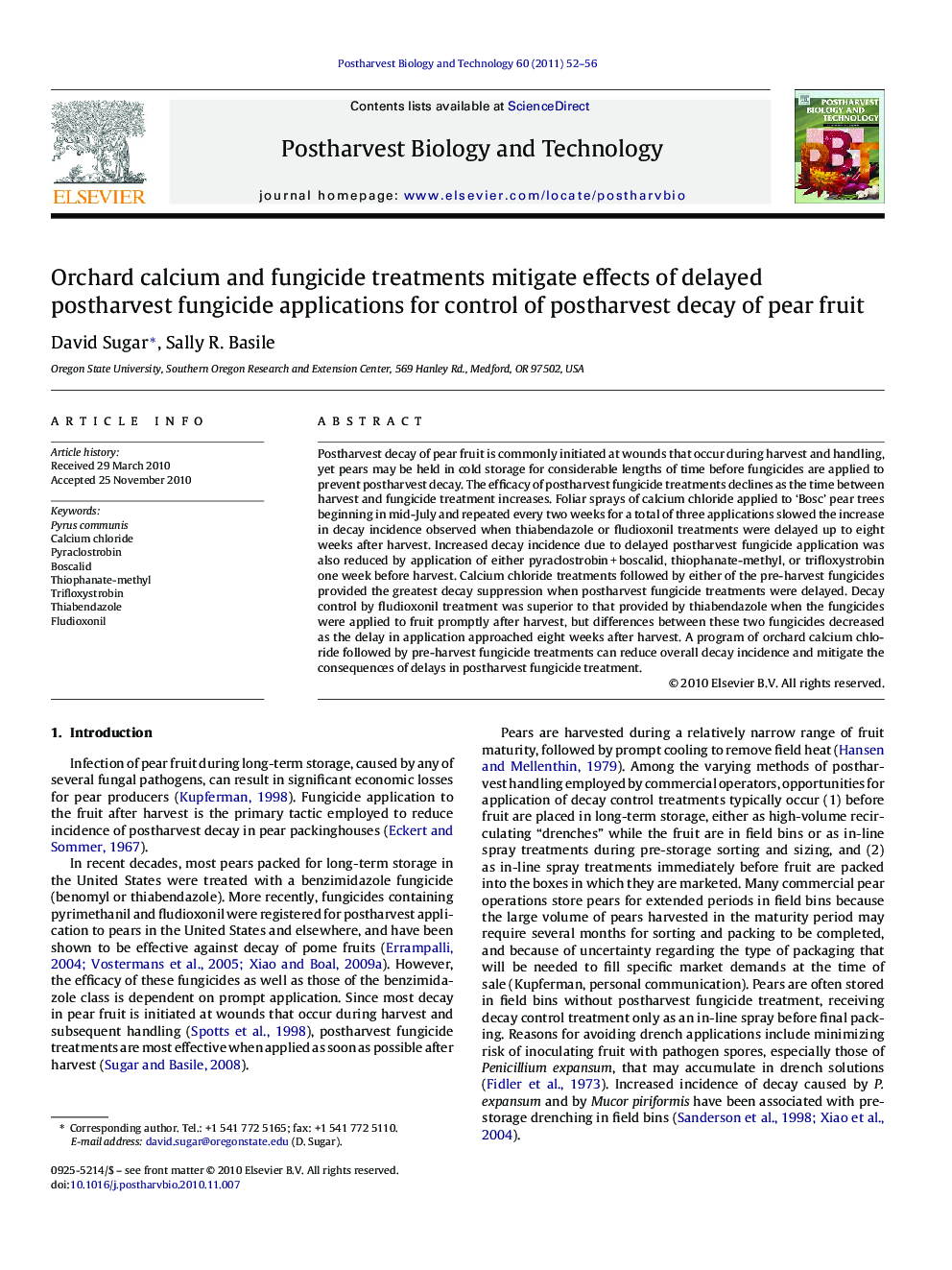| Article ID | Journal | Published Year | Pages | File Type |
|---|---|---|---|---|
| 4518952 | Postharvest Biology and Technology | 2011 | 5 Pages |
Postharvest decay of pear fruit is commonly initiated at wounds that occur during harvest and handling, yet pears may be held in cold storage for considerable lengths of time before fungicides are applied to prevent postharvest decay. The efficacy of postharvest fungicide treatments declines as the time between harvest and fungicide treatment increases. Foliar sprays of calcium chloride applied to ‘Bosc’ pear trees beginning in mid-July and repeated every two weeks for a total of three applications slowed the increase in decay incidence observed when thiabendazole or fludioxonil treatments were delayed up to eight weeks after harvest. Increased decay incidence due to delayed postharvest fungicide application was also reduced by application of either pyraclostrobin + boscalid, thiophanate-methyl, or trifloxystrobin one week before harvest. Calcium chloride treatments followed by either of the pre-harvest fungicides provided the greatest decay suppression when postharvest fungicide treatments were delayed. Decay control by fludioxonil treatment was superior to that provided by thiabendazole when the fungicides were applied to fruit promptly after harvest, but differences between these two fungicides decreased as the delay in application approached eight weeks after harvest. A program of orchard calcium chloride followed by pre-harvest fungicide treatments can reduce overall decay incidence and mitigate the consequences of delays in postharvest fungicide treatment.
Research highlights▶ Calcium enrichment mitigated the effects of delayed postharvest fungicide treatment. ▶ Fungicides applied one week pre-harvest reduced decay at harvest wounds. ▶ Least decay resulted from calcium treatments followed by pre-harvest fungicides.
